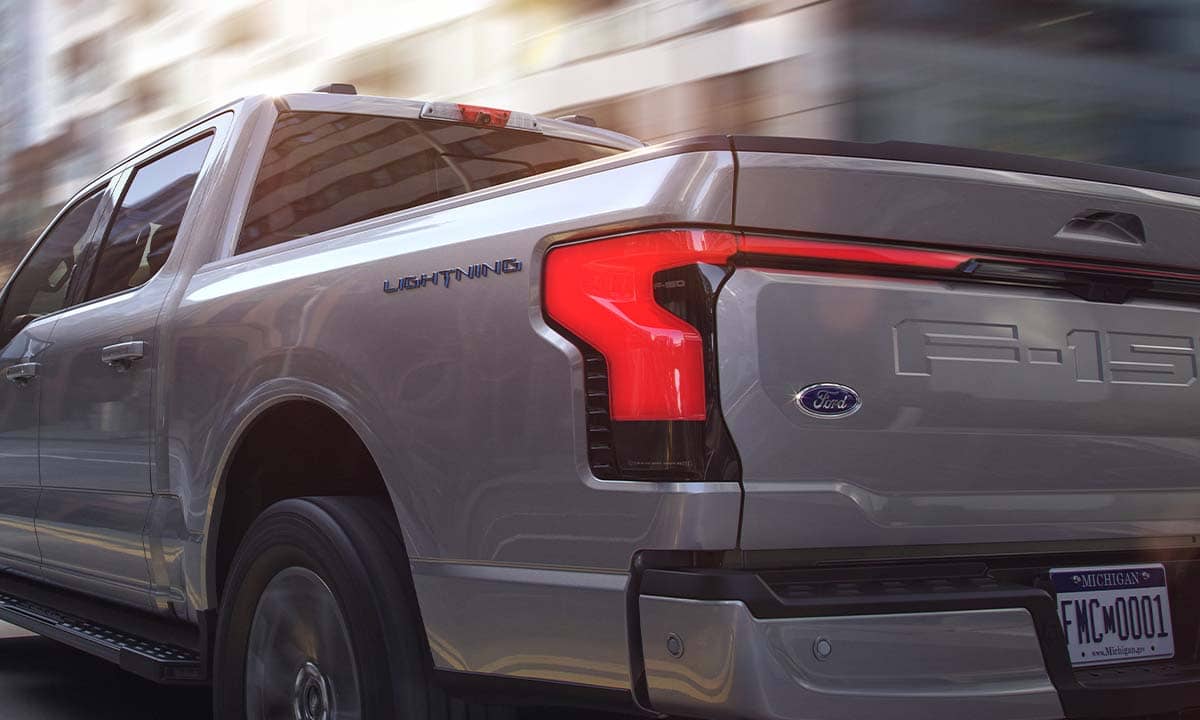Ford is on the cutting edge of the EV (electric vehicle) market. Learn what’s new and all the advantages to owning a new Ford with EV technology.
If you currently drive a Ford car, truck, van or SUV to work and home, it’s safe to assume it’s probably powered by a traditional gas engine. However, change is on the horizon and it’s very likely your next Ford vehicle purchase will be powered by some sort of EV technology. This is good news because it means you’ll be paying much less for out-of-pocket vehicle expenses from gas to maintenance. Less stops at the gas station and less scheduled maintenance like oil changes means you’ll also have more time in your month!
We would be remiss not to mention Ford commercial and fleet EV’s like the E-Transit and F-150 Lightning Pro. Both come standard with their model options respectively, but also include the fleet technology like Telematics to help streamline business operations and can be tailored to each business’s unique requirements. Additionally, it is expected that once the all-electric vehicles get certified by the IRS, you could be eligible for as much as $7,500 in federal tax incentives depending on where you live.
What Is a Ford EV?
A Ford EV (electric vehicle) is vehicle powered by both a gas and electric motor or singularly powered by an all-electric motor like the Mustang Mach-E or F-150 Lightning that is 100% fueled from a battery resource. All EVs feature a rechargeable, high-voltage battery that powers an electric motor. Yet with three EV designs — hybrid, plug-in hybrid and all-electric — there are some key differences. Here’s what sets them apart:
HYBRID
A hybrid is a gasoline engine and an electric motor work together to drive the vehicle. A hybrid does not need to be plugged in — the high-voltage battery charges while the gasoline engine is running and also uses regenerative braking to capture energy used by the brakes.
A great example is the all-new Ford Maverick hybrid that touts an outstanding 42mpg in the city. Ford Maverick models are offered in XL, XLT, and Lariat, and for those who still like a gas engine, the 2.0L EcoBoost is available for about $1,000 extra.

EV Ford Maverick Hybrid
What’s difference between a Plug-In Hybrid and a Hybrid?
A plug-in hybrid like a Ford Escape PHEV operates like a pure hybrid utilizing a gasoline engine and electric motor to drive the vehicle but the to recharge the high-voltage battery, drivers plug the vehicle into a wall outlet or charging station. Having to plug-in the battery to recharge the battery is the main difference between the two however, the plug-in hybrid has a higher capacity battery than a hybrid and can go farther on battery power.

What’s Considered an All-Electric Vehicle?
An all-electric vehicle operates the electric motor exclusively on battery power, and there is no gasoline engine. Unlike the hybrid and plug-in hybrid, an all-electric truck like the F-150 Lightning, has almost no moving parts and needs no engine or gasoline to power the truck. The high-voltage, high-capacity battery charges when plugged into a wall outlet or charging station and mileage to next charge depends on weight, road, and driving conditions.




